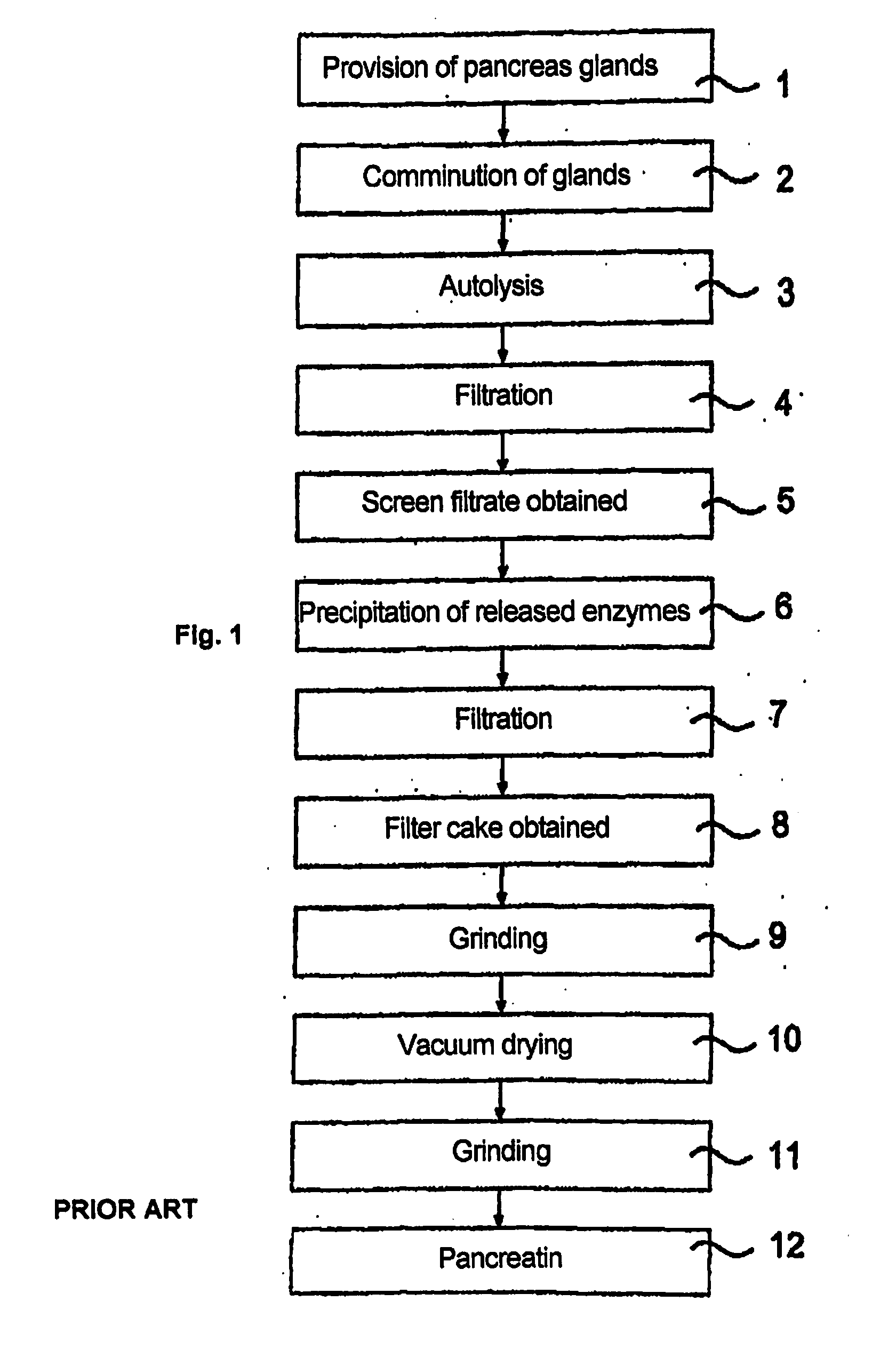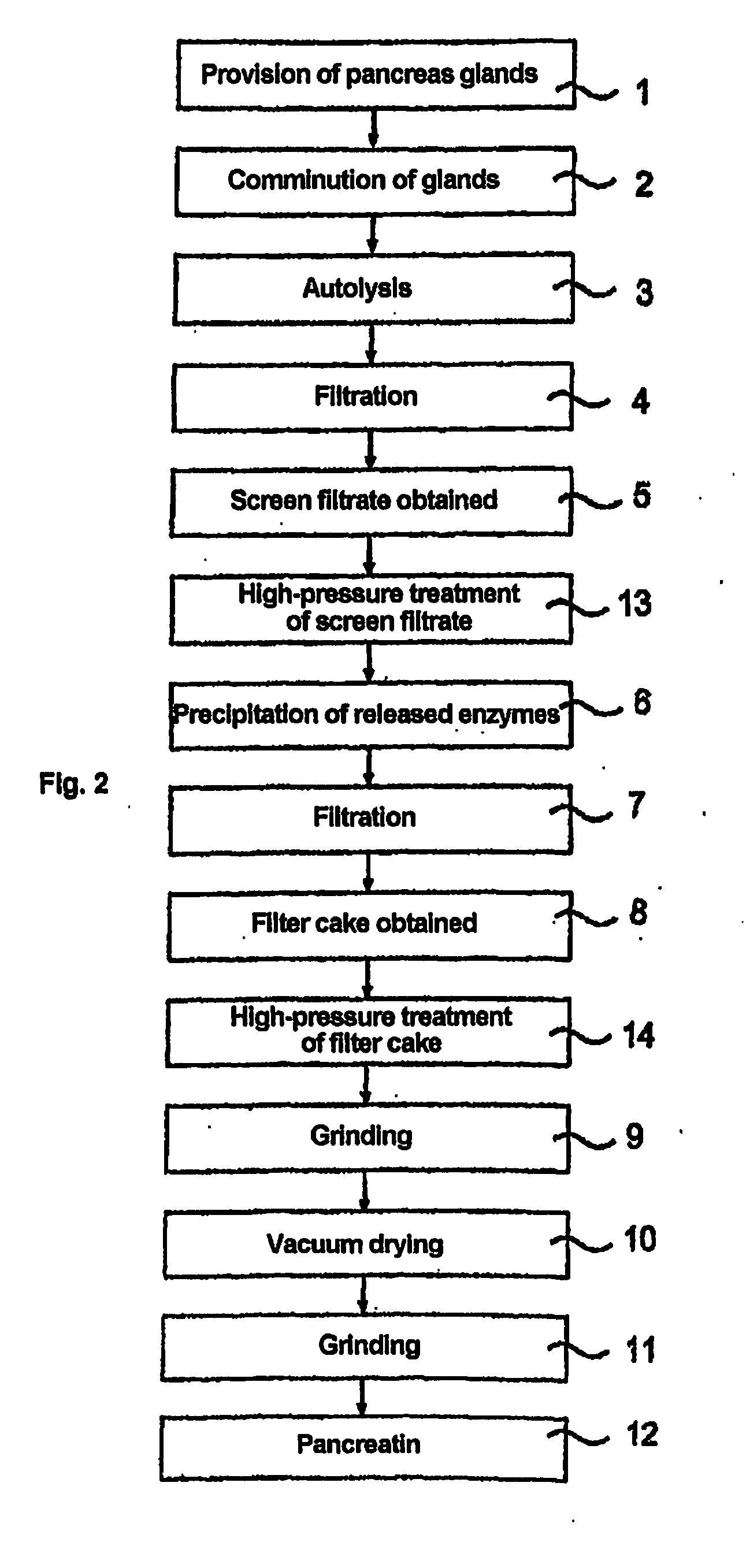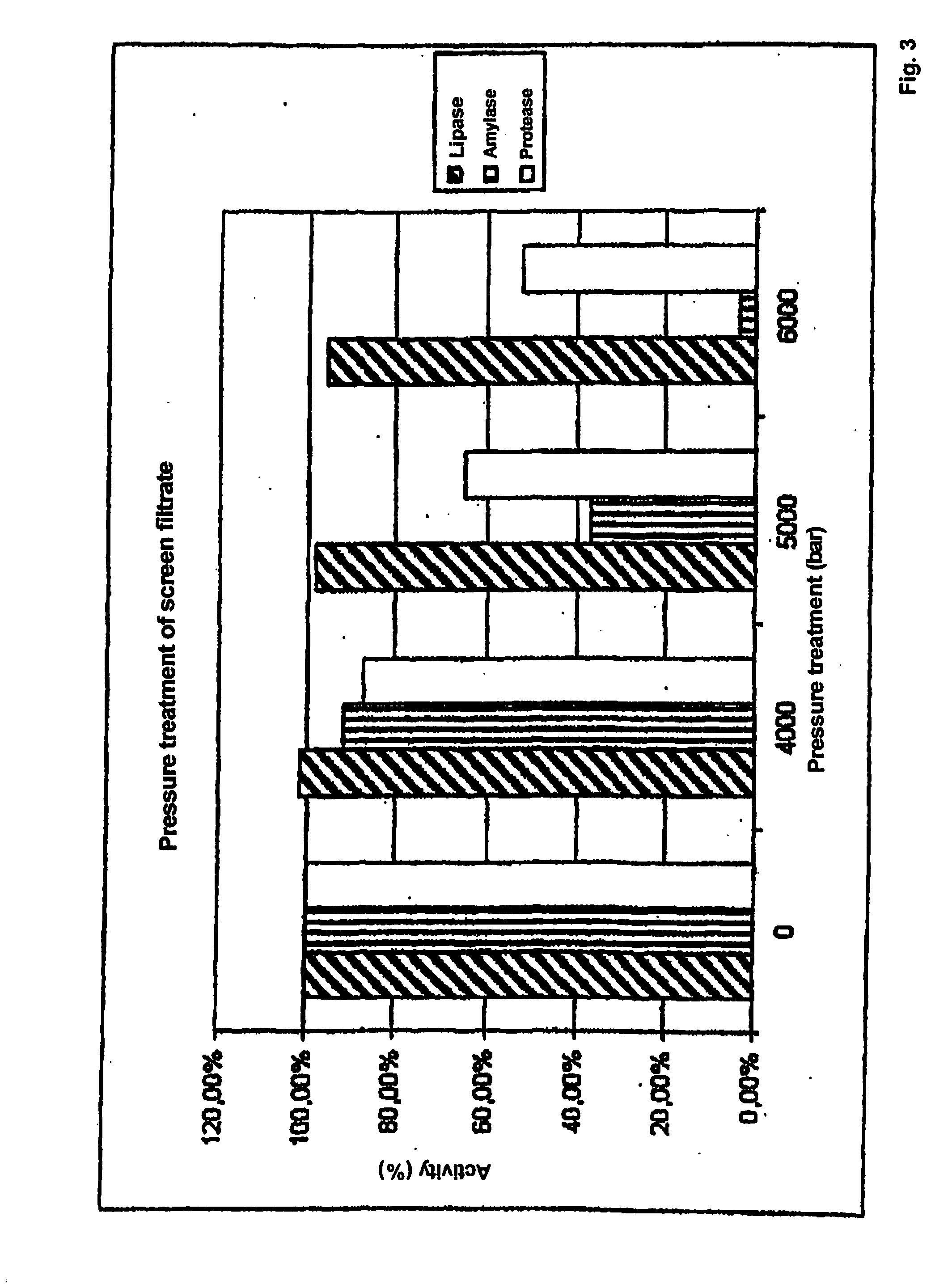Method for reducing the viral and microbial load of biological extracts containing solids
a biological extract and solids technology, applied in the field of biological extract viral and microbial content reduction, can solve the problems of inability to reduce the content of unencapsulated viruses, inability to implement additional virus-reducing steps, and inability to use classical virus-inactivating methods such as dry or moist heat or virus-depleting methods such as filtration or chromatography in most cases with extracts from biological source materials. , to achieve the effect of reducing the content of unencapsulated
- Summary
- Abstract
- Description
- Claims
- Application Information
AI Technical Summary
Benefits of technology
Problems solved by technology
Method used
Image
Examples
example 1
[0055]The following example describes the treatment of intermediate stages from the pancreatin production process as biological extracts which contain solids and have been obtained from porcine pancreas with high pressure.
(1) Method
[0056]The treatment was carried out in a high-pressure apparatus in a batch process.[0057]a) An intermediate stage of the pancreatin production process (screen filtrate with approx. 5% by weight solids fraction in relation to the weight of the screen filtrate, see reference numeral 13 from FIG. 2) which was dissolved in 40% isopropanol was subjected to a high-pressure treatment at 4000, 5000 and 6000 bar for 5 min. at 15° C.[0058]b) Alternatively, a high-pressure treatment was carried out under the same conditions with filter cake (see reference numeral 14 from FIG. 2, solids fraction approx. 50% by weight, liquid fraction consisting of approx. 80% by weight isopropanol and approx. 20% by weight water).
example 2
[0061]The following example describes the treatment of filter cake from the pancreatin production process which has been obtained from porcine pancreas with high pressure.
(1) Method
[0062]The treatment was carried out in a high-pressure apparatus in a batch process.
[0063]Filter cake (see reference numeral 14 from FIG. 2, solids fraction approx. 50% by weight, liquid fraction consisting of approx. 80% by weight isopropanol and approx. 20% by weight water) was subjected to a high-pressure treatment at various pressures and temperatures.
[0064]The activity of lipase, amylase and protease compared to an untreated sample was determined for all samples.
(2) Evaluation
[0065]The results shown indicate that the inactivation of the enzymes in the filter cake (FIG. 2) depends both on the pressure and on the temperature. The lipase activity has the greatest stability and was not significantly inactivated even at pressures of 7000 bar (FIG. 5). In contrast to this, the amylase had the greatest sens...
example 3
[0066]The following example describes the inactivation of the unenveloped virus FCV (feline calicivirus) using high pressure.
(1) Method
[0067]The treatment was carried out in a high-pressure apparatus in a batch process.
[0068]An FCV stock solution in culture medium was subjected to a high-pressure treatment at various pressures and temperatures for various times. The virus titer was determined in the starting sample and in the treated samples.
(2) Evaluation
[0069]The results shown (Tab. 1) indicate that the virus titer falls below the detection limit of 1.9 log due to the high-pressure treatment in all samples except the sample which was treated at 20° C., 5 min at 4000 bar. The difference between the virus titers of the untreated sample and the treated samples produces a depletion factor of ≧6.3 log. FCV is used as a model virus for the likewise unenveloped HEV, which has been found in pigs and is considered a human pathogen but cannot itself be detected in cell cultures. A depletion...
PUM
| Property | Measurement | Unit |
|---|---|---|
| Temperature | aaaaa | aaaaa |
| Fraction | aaaaa | aaaaa |
| Fraction | aaaaa | aaaaa |
Abstract
Description
Claims
Application Information
 Login to View More
Login to View More - R&D
- Intellectual Property
- Life Sciences
- Materials
- Tech Scout
- Unparalleled Data Quality
- Higher Quality Content
- 60% Fewer Hallucinations
Browse by: Latest US Patents, China's latest patents, Technical Efficacy Thesaurus, Application Domain, Technology Topic, Popular Technical Reports.
© 2025 PatSnap. All rights reserved.Legal|Privacy policy|Modern Slavery Act Transparency Statement|Sitemap|About US| Contact US: help@patsnap.com



